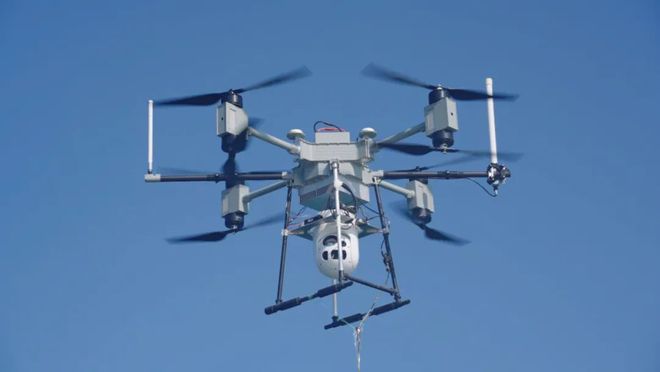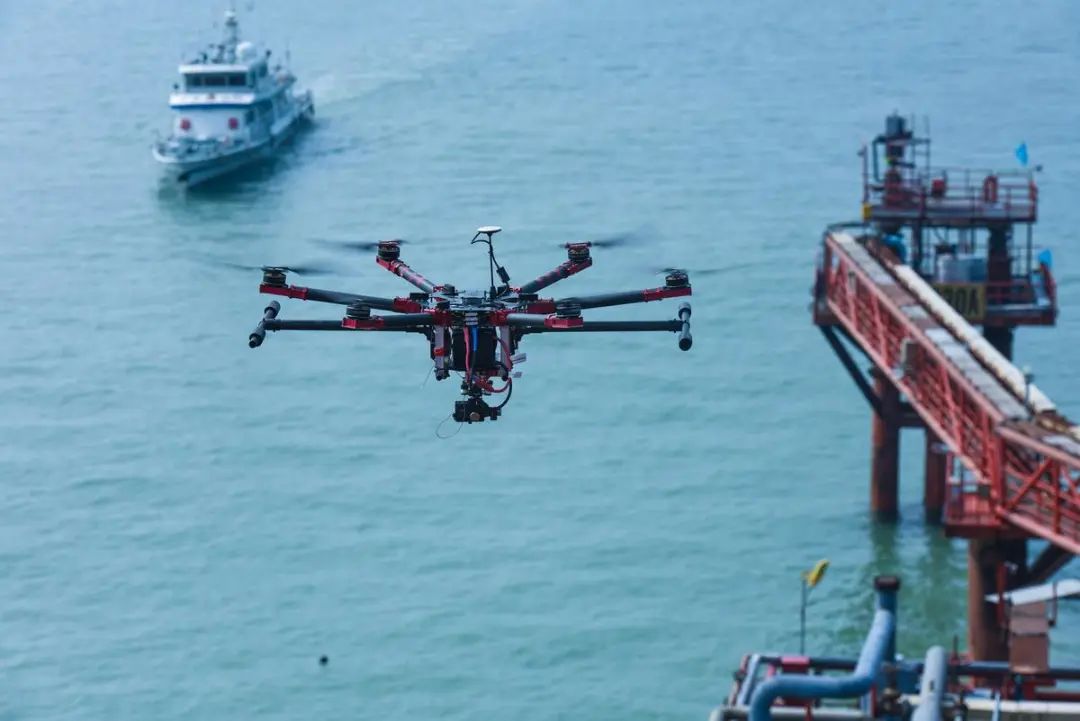
On the global economic chessboard, the low altitude economy is laying out in a unique manner, and each country has opened its own exciting chapter in this low altitude airspace (below 1000 meters). Today, let's take the "information plane" and travel around the world to see how popular the low altitude economy is on the international stage.
The United States: Pioneer and Leader of Low Altitude Economy
When it comes to low altitude economy, the United States is definitely a 'big shot' that cannot be ignored. As the most developed country in the world for general aviation, the United States' low altitude sector is like a bustling 'air market'.
Let's first take a look at their general airports, which are as numerous as stars in the sky, densely packed. According to statistics, there are nearly 20000 general airports in the United States. What is this concept? It's almost equivalent to 25 general airports every 10000 square kilometers, and this density is as convenient as finding a small supermarket just a few streets away in our city. These general airports are like "air stations" that provide takeoff, landing, and docking services for various small aircraft, helicopters, and drones.
In terms of aircraft ownership, the United States is unparalleled. Private planes are like common private cars in the United States, and many families have their own small planes. During holidays, when a family goes on vacation by plane, the scene is as pleasant as driving a car to the countryside for sightseeing. Moreover, general aviation operators in the United States are also flourishing everywhere, covering various corners of the low altitude economy from flight training to air tourism, from aerial photography to agricultural and forestry operations.
The drone industry in the United States has also developed rapidly. In the field of agriculture, drones utilize advanced multispectral imaging technology to accurately monitor the growth status of crops, just like equipping each crop with a private doctor to promptly detect diseases, pests, and nutrient deficiencies, and then guide farmers in precise fertilization and application, greatly improving the efficiency and quality of agricultural production. In terms of logistics and delivery, e-commerce giants such as Amazon have been vigorously promoting drone delivery projects. Imagine, shortly after placing an order, a small and agile drone carrying your package, passes through the high-rise buildings of the city, and lands steadily at your doorstep, at a speed faster than lightning.
Europe: Low altitude Economic Alliance for Collaborative Development
European countries are following a path of collaborative cooperation in the development of low altitude economies, like a group of like-minded partners working hand in hand.
Taking the UK as an example, London, as an international metropolis, plays an important role in low altitude economy in urban management and services. Drones are widely used for monitoring urban planning and construction. During the construction process of large-scale construction projects, drones can regularly conduct aerial photography and generate high-precision 3D models, allowing engineers to grasp the progress and quality of the project in real time, detect problems in a timely manner, and make adjustments, just like installing a pair of "thousand mile eyes" for construction projects. At the same time, the UK also has its own unique characteristics in air tourism, with small planes carrying tourists hovering over the country's ancient castles and beautiful countryside, allowing tourists to experience the country's unique history, culture, and natural scenery from the air. This unique tourism experience attracts tourists from all over the world.
France has a profound foundation in aviation manufacturing technology, providing solid technical support for the development of low altitude economy. Small aircraft and helicopters produced by French aircraft manufacturing companies are popular worldwide for their advanced technology, outstanding performance, and beautiful design. These aircraft not only play an important role in low altitude economic activities in France, but are also exported to other countries, contributing to the development of the global low altitude economy. Moreover, France has rich experience in flight training and has trained a large number of excellent pilots, making important contributions to the talent reserve of low altitude economy.
In Europe, countries have also established cooperation mechanisms to achieve the sharing and optimized allocation of airspace resources. Like a vast air traffic network, aircraft from various countries can freely shuttle and fly smoothly within this network. This collaborative development model not only improves the operational efficiency of the low altitude economy, but also promotes economic exchanges and cooperation among European countries.
Asia: Rapidly Rising Low Altitude Economic Forces
In Asia, the low altitude economy is also showing a vigorous development trend, and many countries are actively laying out their plans, trying to get a share of this emerging field.
Japan, a technological powerhouse, has also performed well in the field of low altitude economy. Japan's drone technology has a wide range of applications in industrial inspection and rescue fields. In the inspection work of some large factories and infrastructure, drones can carry various high-precision inspection equipment, enter areas that are difficult for humans to reach, conduct detailed inspections of equipment and structures, and timely discover potential safety hazards. During natural disasters such as earthquakes and floods, drones can quickly reach the disaster area for disaster reconnaissance and material transportation. They are like brave 'little soldiers', providing crucial support for rescue work in dangerous environments.
South Korea has achieved significant results in the commercial application of low altitude economy. South Korea's drone logistics and delivery services have been promoted in some cities. After consumers place orders online, drones can quickly deliver goods to designated locations, greatly reducing delivery time and improving consumers' shopping experience. Moreover, low altitude tourism projects in South Korea are also popular among tourists. Tourists can take a helicopter ride over cities such as Seoul to overlook the beautiful night scenery and experience the prosperity and charm of modern cities.
China, as the world's second-largest economy, has made remarkable progress in the field of low altitude economy. In recent years, with the gradual relaxation of policies and continuous technological innovation, China's low altitude economy has ushered in a golden period of rapid development. In terms of drone manufacturing, China has become the world's largest producer and exporter of drones, with products from companies such as DJI occupying an important share of the global market. China's drones are not only widely used in the civilian field, but also play an important role in the military field. In terms of general aviation, the number of general airports in China is constantly increasing, and the scale and business scope of general aviation operators are also expanding. The booming development of aviation tourism, flight training, aviation logistics and other businesses across the country has injected new impetus into economic growth.
Other countries and regions: distinctive paths for the development of low altitude economy
In addition to the aforementioned countries, other countries and regions around the world are also exploring their own paths of low altitude economic development based on their own characteristics and needs.
Australia, with vast land and abundant natural resources, plays an important role in agriculture and mining through its low altitude economy. Drones are widely used in Australian farms for irrigation management of crops and monitoring of livestock. In the mining industry, drones can conduct terrain mapping and resource exploration in mining areas, greatly improving exploration efficiency and safety. Moreover, Australia's air tourism is also unique, where tourists can fly small planes over spectacular natural landscapes such as the Great Barrier Reef and mysterious inland deserts, experiencing the wonder and beauty of nature.
Brazil, as the largest country in South America, also has unique advantages in the development of low altitude economy. Brazil has abundant agricultural and forestry resources, and drones have been widely used in agricultural crop protection and forest monitoring. At the same time, Brazil's aviation manufacturing industry is constantly growing and expanding, producing small aircraft and helicopters that not only meet domestic demand but also export to other countries. In addition, Brazil's aviation sports activities are also very active, attracting many aviation enthusiasts to participate and creating a good atmosphere for the development of the low altitude economy.
Some countries in Africa, although having relatively low levels of economic development, are actively exploring opportunities for the development of low altitude economies. In some areas, drones are used for the distribution of medical supplies, solving the problem of shortage of medical resources in remote areas. The rapid delivery of drugs and medical equipment through drones is like building an "air lifeline" for people in remote areas, providing protection for their health.
Summary and Outlook
From a global perspective, the low altitude economy has become a new engine driving economic development, with countries showcasing their unique charm and unlimited potential in this low altitude airspace. Whether it is the comprehensive leadership of the United States, the coordinated development of Europe, or the rapid rise of Asia and other countries and regions, they all show us the vast development prospects of the low altitude economy.
With the continuous advancement of technology and the strengthening of international cooperation, the future low altitude economy will usher in even more brilliant development on a global scale. We can expect that in the near future, the low altitude field will become busier and more orderly, with various aircraft soaring freely in the sky, bringing more convenience and surprises to people's lives. Whether entrepreneurs, investors, or ordinary people, they will all find their own opportunities and value in the wave of low altitude economic development. Let us look forward to a better tomorrow for the low altitude economy and witness this emerging field shining brighter on the global economic stage together!




